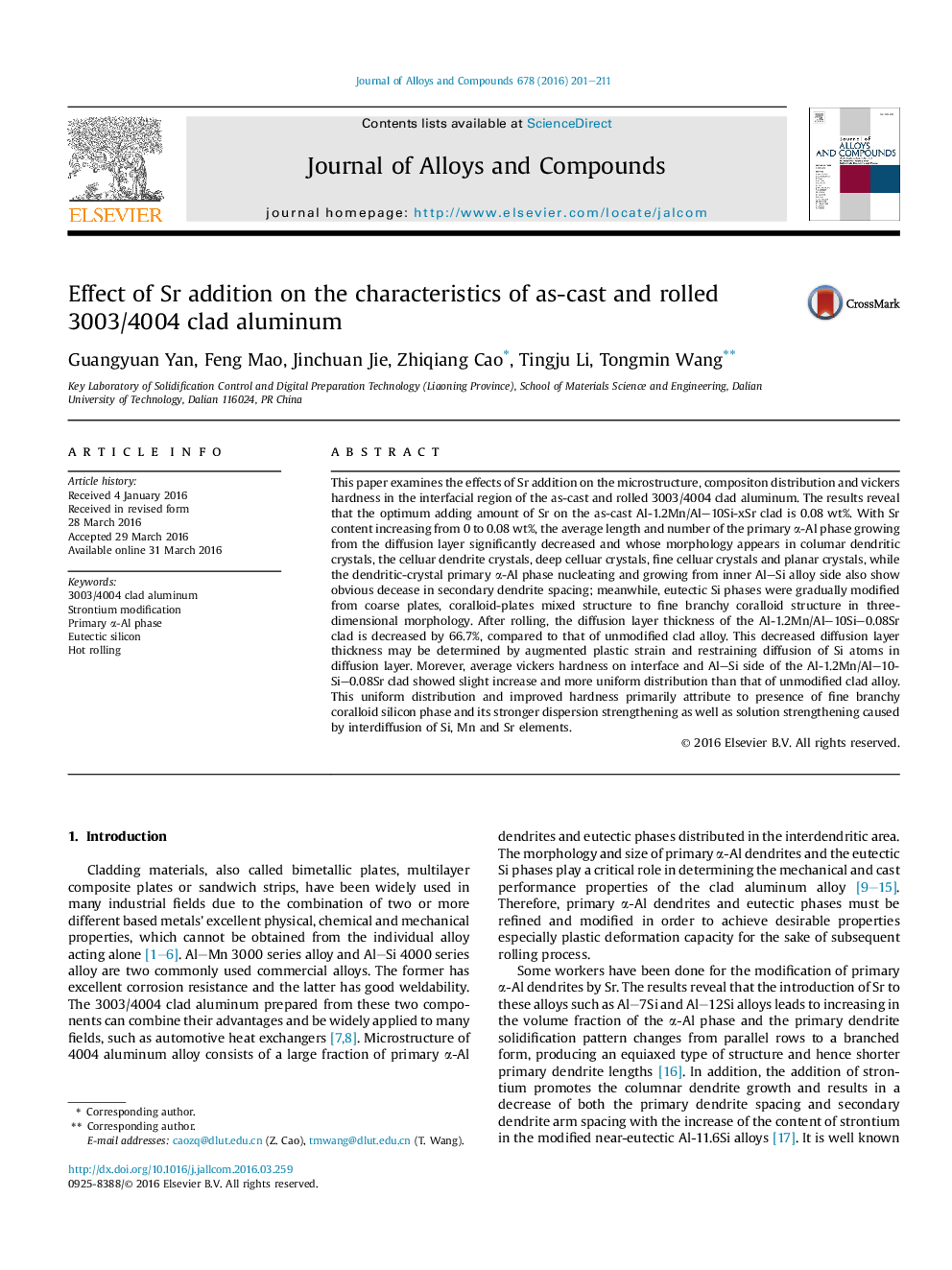| Article ID | Journal | Published Year | Pages | File Type |
|---|---|---|---|---|
| 1606123 | Journal of Alloys and Compounds | 2016 | 11 Pages |
Abstract
This paper examines the effects of Sr addition on the microstructure, compositon distribution and vickers hardness in the interfacial region of the as-cast and rolled 3003/4004 clad aluminum. The results reveal that the optimum adding amount of Sr on the as-cast Al-1.2Mn/Al10Si-xSr clad is 0.08 wt%. With Sr content increasing from 0 to 0.08 wt%, the average length and number of the primary α-Al phase growing from the diffusion layer significantly decreased and whose morphology appears in columar dendritic crystals, the celluar dendrite crystals, deep celluar crystals, fine celluar crystals and planar crystals, while the dendritic-crystal primary α-Al phase nucleating and growing from inner AlSi alloy side also show obvious decease in secondary dendrite spacing; meanwhile, eutectic Si phases were gradually modified from coarse plates, coralloid-plates mixed structure to fine branchy coralloid structure in three-dimensional morphology. After rolling, the diffusion layer thickness of the Al-1.2Mn/Al10Si0.08Sr clad is decreased by 66.7%, compared to that of unmodified clad alloy. This decreased diffusion layer thickness may be determined by augmented plastic strain and restraining diffusion of Si atoms in diffusion layer. Morever, average vickers hardness on interface and AlSi side of the Al-1.2Mn/Al10Si0.08Sr clad showed slight increase and more uniform distribution than that of unmodified clad alloy. This uniform distribution and improved hardness primarily attribute to presence of fine branchy coralloid silicon phase and its stronger dispersion strengthening as well as solution strengthening caused by interdiffusion of Si, Mn and Sr elements.
Related Topics
Physical Sciences and Engineering
Materials Science
Metals and Alloys
Authors
Guangyuan Yan, Feng Mao, Jinchuan Jie, Zhiqiang Cao, Tingju Li, Tongmin Wang,
